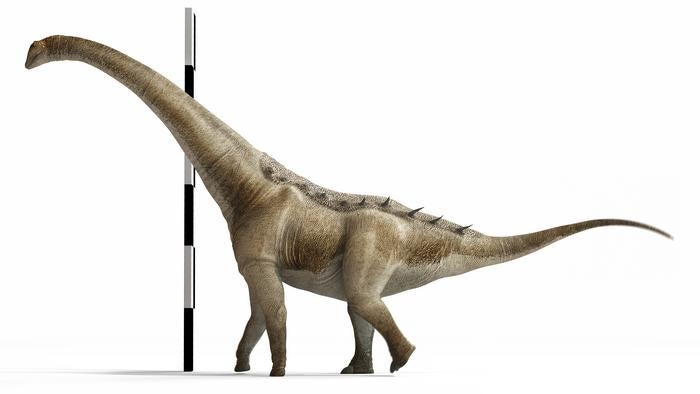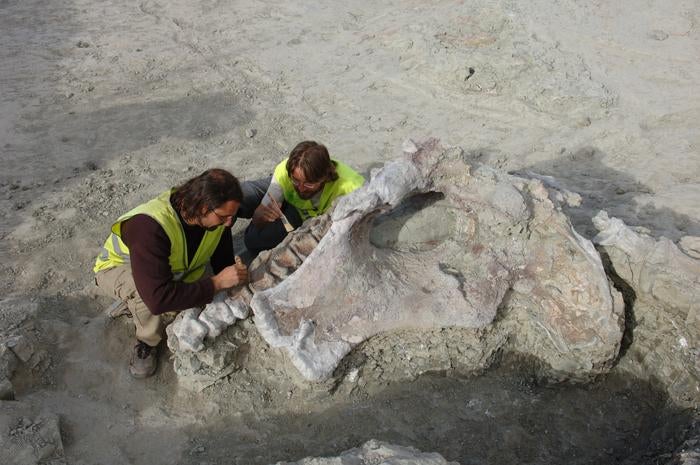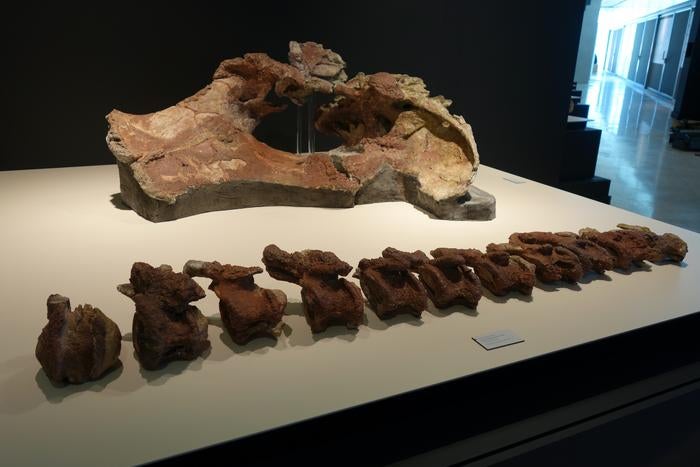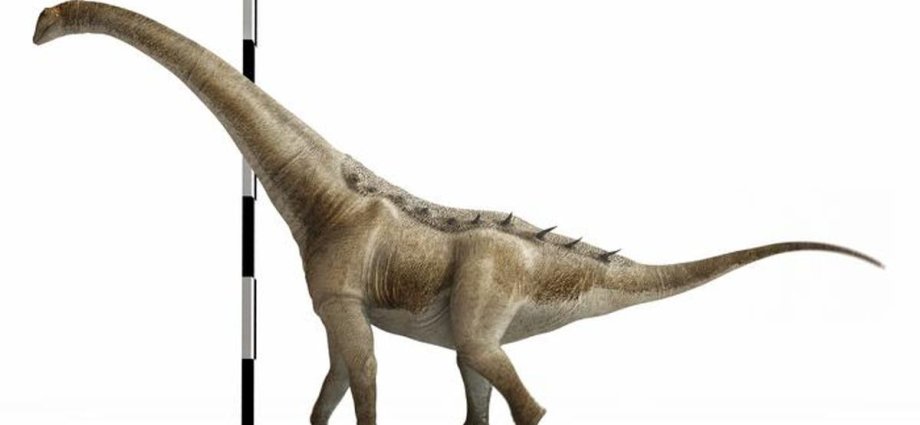Paleontologists have discovered a new species of dinosaur that lived in Spain some 75 million years ago.
The sauropod — dinosaurs that are characterized by their long necks and tails, four thick legs, and small heads — was an herbivore that lived in Cuenca, around two hours outside of what is now the nation’s capital, Madrid.
It has been named Qunkasaura pintiquiniestra, a reference to the area it lived in, the Latin name for lizard, contemporary Spanish painter Antonio Saura, and a character from the novel Don Quixote.
Nicknamed “Qunka,” the species is a medium-to-large-sized titanosaur, reaching nearly 50 feet long and weighing more than 10 tons. The distance from its shoulder to its foot was around 10 feet.
Researchers with the Universidad Nacional de Educación a Distancia’s Evolutionary Biology Group published their findings Tuesday in the journal Nature Communications Biology.

Alive during the Cretaceous Period, Qunka was found at the fossil site of Lo Hueco, or “The Hollow.” The quarry was first discovered in May of 2007, and was excavated during the construction of a high-speed railway between Madrid and Valencia. Archaeologists collected more than 12,000 fossils during the installation of the tracks, which has become one of the most relevant collections of fossil vertebrates from the Upper Cretaceous period in Europe.
Lead study author and University of Lisbon paleontologist Pedro Mocho told The Independent on Thursday that Qunka was a specimen that was more complete than other sauropod fossils collected at Lo Hueco.
“We decided to pick the specimens that we believe were more informative, they were more complete. And, Qunkasaura was one of the specimens by the state of preservation,” he said.
Mocho said he started to work in the lab with the specimen in 2015 — nearly a decade after the initial dig. While Europe does not have very big titanosaurs, they saw that Qunka was big for its environment. In the Americas, there are much bigger titanosaurs that are over 80 feet long.

“So, when we start to work with Qunka, we realized very soon – because we start to work in these huge blocks with the pelvis and the caudal vertebra … the muscleology of the caudal vertebra was very weird and very singular for the European Upper Cretaceous,” Mocho explained. “So, when we start to figure out, we start to believe that this was a new species of titanosaur.”
The caudal vertebrae are the bones that make up the tails of vertebrates. The authors pointed out that Qunka’s unique tail vertebrae provides new insights into non-avian Late Cretaceous dinosaurs in the region, which lived when Europe was made up of islands. The study also identified Qunka as a representative of opisthocoelicaudine saltasaurids, a group present in the northern hemisphere.
Part of Qunka has been on display in Cuenca’s Paleontological Museum of Castilla-La Mancha since 2018, but was not named. Nearly 40 percent of the titanosaur’s skeleton is complete. Mocho said all of Qunka’s bones will be on display there soon.

More work will be done to determine Qunka’s age, growth, movement, and biomechanics.
Although paleontologists are still working to understand how animals could have died at Lo Hueco, some theories are that there was a flood that trapped the animals, including turtles and crocodiles.
“Lo Hueco — it’s probably a turning point for the understanding of dinosaurs from the Upper Cretaceous, and it’s from far the most important fossil site, with more than 10,000 elements collected,” Mocho said.











